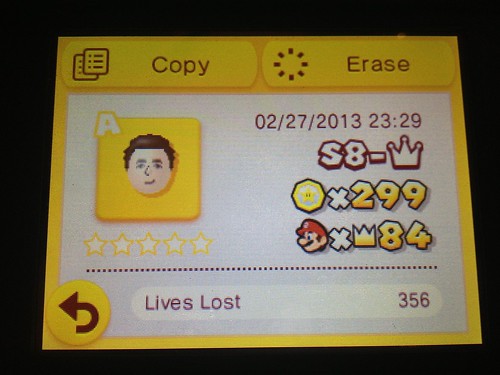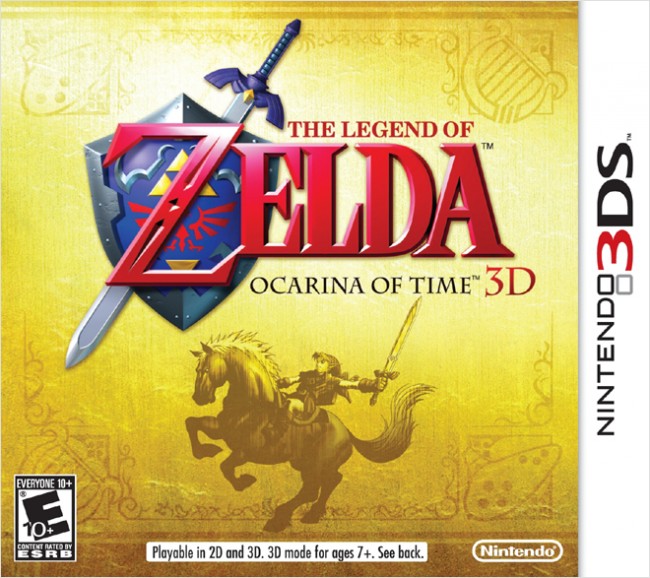Hey, so people are still talking about this, apparently.
In case you missed it, lots of people are discussing Nintendo’s introduction of a 3DS system (which is crazily but accurately called the 2DS) that lacks one of the main points of the system (the glassless 3D) just to drop the price $40. This has stimulated a lot of talk about how Nintendo is doomed. To many, the only way to save the Nintendo ship is for them to start making iOS games, and quickly.
I could link articles on this all day, but I’d rather keep what I have to say. Comments or questions are welcome. Salient points:
It’s too Early to Judge the 3DS (or the 2DS, for That Matter)
Pokémon’s not out yet. Diamond/Pearl/Platinum sold 18 million copies. Black/White and sequels sold about 15 million copies. They are still making Pokémon series and movies, and people are still watching them.
It’s not as popular as it was ten years ago, but Pokémon is still a force. I predict it will drive a lot of 2DS unit sales. ((For the record, I’m bullish on the 2DS.))
Nintendo waited two years before releasing Diamond and Pearl for the DS, just like they have for the 3DS. Nintendo plays a long game in general—but in another segment, that’s not working in their favor.
Yes, The Wii U Is a Failure, and Here’s Why
They launched the Wii U without any compelling games and a split SKU strategy that made no sense. ((Nintendo appears to be fixing this bit I think it’s happening way too late.))
New Super Mario Bros. U is actually a really good 2D Mario game, but it’s not a barnburner by any stretch of the imagination, nor does it do anything unique with the hardware available. It was the only interesting thing available at launch that wasn’t available on other platforms, and other interesting games are only just now starting to appear.
The Wii U hardware itself is pretty novel and it has some promise that’s still not being exploited properly. It’s just that Nintendo hasn’t done anything to show off what it can do to the point that I’m curious what (if anything) they had in development when they designed the hardware.
For a company that designs hardware and software in tandem, it sure doesn’t look like it (yet) with Wii U.
Wii vs. Wii U: Markets Change
Nintendo’s other mistake when launching was courting third-parties to port (in some cases pretty old) titles to Wii U for launch. I just looked at my game shelf. I have a good number of Wii games sitting there, and not one of them is a multi-platform title.
The Wii was a weird aberration; an underpowered piece of hardware with a (then) novel control system. In many ways, it mirrors the original DS. Nintendo found a success marketing to people who hadn’t been marketed to before, and captured the attention of a consumer segment that until then wasn’t interested in buying a game console.
But the Wii launched in 2006, in a pre-iPhone world. Here’s what sold on the Wii ((http://www.vgchartz.com/platform/2/wii/)):
- Nintendo franchises.
- Mini-game collections.
- Rhythm games (primarily Just Dance).
In 2013, the Wii U suffers from a dearth of Nintendo franchises ((So far, it’s Pikmin 3, a New Super Mario game and DLC pack, and an upcoming remake of an old Zelda game.)), mini-game collections have largely (if not completely) been subsumed by iOS free-to-play games, and the music game genre has dwindled to near-nothing due to overexploitation.
Given the current state of the games market, Nintendo’s reaching out to independent game studios is a good sign, but it’s not a compelling reason to buy a Wii U instead of something else. Much like the Virtual Console, it’s a reason to spend money once you have one.
Nintendo should do what it did with the DS once upon a time: create compelling first-party experiences using their franchises to sell units. A new IP or three wouldn’t hurt, either. ((Marco Arment realizes this. So does John Siracusa.)) (Nintendo hasn’t created a successful new IP since the Gamecube days.)
iOS Is (Hopefully) a Different Beast
Making iOS games is not in Nintendo’s DNA and I firmly believe they will go down fighting before they publish a game on iOS. (They have already published an app in the form of the Pokédex.)
Reasons I say this:
- Lack of physical controls (a controller API for iOS does not and will not fix this).
- Race-to-the-bottom pricing and the dominance of free-to-play, which is a game I do not believe Nintendo will want to play.
- Handheld gaming is where Nintendo is and has been in the strongest position. Even during the Wii era, there were 50% more DS units sold.
Apple’s not really competing in the same space. I agree with Lukas Mathis that the 3DS and other game systems are not the same market as iOS gaming. The use cases are fundamentally different.
I do think that this new segment of mobile gaming is stealing consumers from the more traditional handheld market. They are taking those market segments the Wii managed to reach and siphoning them off; it’s questionable traditional game consoles will see them again, though not for lack of trying.
There’s still a core audience that will continue to purchase and use consoles and handhelds. I’m not sure how much longer that’s going to last, but you should want it to if you like games. Take a look at the iOS top 25 grossing games chart and see the types of games that are in there.
I don’t want that becoming the dominant force in games, and if you care about the form, neither do you. ((cf. The Loudness Wars, The Megapixel Myth.))
All This Distracts from Nintendo’s Real Weakness
Services.
(But that’s a topic for another day.)
Like this:
Like Loading...


